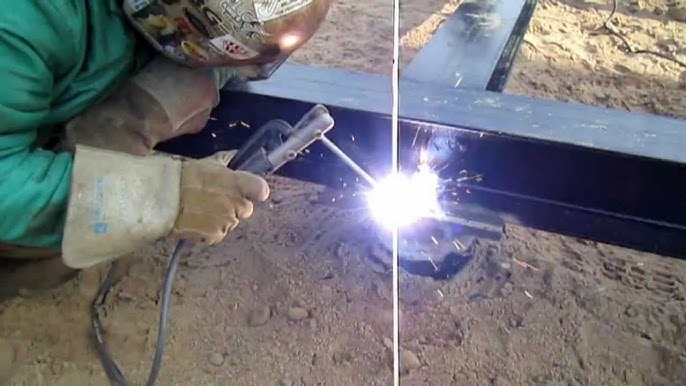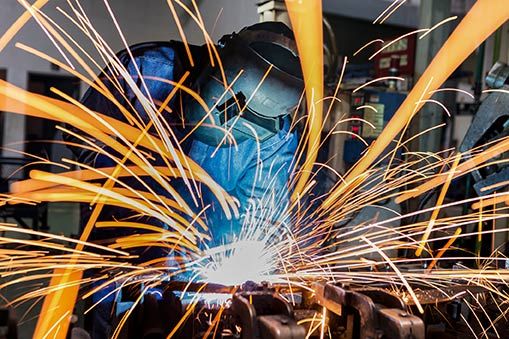Typical Welding Fixing Issues and Exactly How to Address Them Efficiently
Welding repair services often run into a series of problems that can threaten the integrity of the end product. Usual issues include insufficient infiltration, porosity, and imbalance, to name a few. Each problem offers unique obstacles that require details techniques for resolution. Comprehending these problems is important for welders intending to improve their end results and skills. This discussion will certainly explore these typical welding repair issues and efficient approaches to resolve them.
Insufficient Infiltration
Poor infiltration takes place when the weld metal stops working to completely fuse with the base material, leading to weak joints and potential architectural failures. This concern commonly originates from inadequate heat input, inaccurate electrode angle, or improper welding speed. Welders may come across insufficient infiltration due to a mistake of the required parameters for a certain product thickness or kind. Additionally, contamination on the base material's surface area can impede efficient bonding, aggravating the issue. To address inadequate penetration, welders need to guarantee ideal settings on their tools and keep a tidy work surface. Routine inspection of welds is suggested to identify any kind of shortages early, enabling timely adjustments and the avoidance of jeopardized structural integrity in welded assemblies.
Porosity
Porosity is an usual defect in bonded joints that shows up as tiny gas bubbles entraped within the weld steel. This defect can endanger the honesty of the weld, bring about minimized stamina and potential failing under stress. Montana Mobile Welding and Repair Belgrade. Porosity normally develops from contamination, moisture, or incorrect welding techniques, which allow gases to leave into the molten weld pool. To address porosity, welders need to guarantee proper surface preparation, keep a clean working atmosphere, and make use of ideal welding parameters. Furthermore, selecting the best filler product and protecting gas can alleviate gas entrapment. Regular assessment and screening of welds can help identify porosity early, guaranteeing prompt corrective activities are taken, consequently maintaining the high quality and integrity of the welded structure
Imbalance
Misalignment in welding can arise from different elements, including improper setup and thermal expansion. Understanding the origin is crucial for reliable resolution. Several adjustment strategies are available to straighten parts and assure architectural honesty.
Sources of Imbalance
Welding misalignment commonly originates from a range of underlying problems that can compromise structural integrity. One main cause is inappropriate fit-up of elements before welding, which can result in voids and unequal surfaces. Variations in thermal expansion throughout the welding procedure can likewise lead to distortion, particularly if the materials being joined have various coefficients of growth. In addition, poor fixturing and clamping might fall short to hold parts safely in area, resulting in motion throughout welding. Inadequately maintained equipment, consisting of welding equipments and devices, may present incongruities in the weld bead, additional adding to imbalance. Lastly, operator mistake, coming from inadequate training or experience, can also play a considerable duty in creating misaligned welds.
Modification Strategies Offered
Dealing with misalignment successfully requires a combination of rehabilitative techniques customized to the certain problems handy. One common method is making use of jigs or fixtures to hold elements in the proper placement throughout welding, making certain constant positioning. Furthermore, preheating the materials can assist reduce distortion and boost fit-up. For considerable imbalance, mechanical adjustment techniques, such as making use of hydraulic jacks or clamps, can be employed to fix the placement prior to welding. Post-weld heat treatment may additionally be essential to ease tensions brought on by imbalance. Lastly, careful evaluation and adjustment during the arrangement stage can avoid imbalance concerns from ending up being considerable troubles, advertising a smoother welding process and boosting total architectural integrity.
Distortion
Distortion is a common difficulty in welding that can develop from different aspects, consisting of unequal cooling and heating. Understanding the root causes of distortion is crucial for applying effective avoidance strategies. Addressing this problem not just enhances structural stability however likewise boosts the total top quality of the weld.
Sources of Distortion
When based on the extreme heat of welding, products frequently undergo modifications that can result in distortion. This phenomenon primarily develops from thermal growth and contraction throughout the welding procedure. As the weld location warms up, the material expands; upon cooling, it gets, which can develop internal tensions. In addition, uneven heating across a workpiece can intensify these anxieties, resulting in bending or bending. The type of product additionally plays a substantial role; steels with differing thermal conductivity and coefficients of expansion may react in different ways, causing unpredictable distortions. Poor joint design and insufficient fixturing can add to imbalance throughout welding, enhancing the probability of distortion. Comprehending these causes is important for efficient welding repair service and avoidance approaches.
Avoidance Techniques
Effective prevention techniques for distortion throughout welding concentrate on managing warmth input and making certain proper joint style. Preserving a regular heat input helps to lessen thermal growth and tightening, which can bring about distortion. Making use of strategies such as pre-heating the workpiece can likewise decrease the temperature gradient, advertising consistent home heating. Furthermore, picking suitable joint designs, such as T-joints or lap joints, can boost stability and lower stress and anxiety concentrations. Carrying out proper fixturing to protect the work surfaces in position even more aids in preserving placement throughout the welding process. Staggered welding series can distribute heat more evenly, avoiding localized distortion. By using these methods, welders can significantly reduce the probability of distortion and boost the total high quality of their welds.
Breaking
Splitting is a typical concern experienced in welding fixings, often resulting from various elements such as inappropriate cooling rates, material choice, or insufficient joint prep work. The event of splits can substantially jeopardize the integrity of the weld, bring about prospective failings throughout procedure. To address this concern, welders need to initially evaluate the origin creates, ensuring that products are compatible and appropriately chosen for the details application. In addition, regulating the cooling price during the welding procedure is necessary; rapid cooling can generate tension and result in breaking. Proper joint design and prep work likewise add to decreasing the threat. Implementing these techniques can improve weld top quality and toughness, inevitably reducing the likelihood of fracturing in completed weldments.

Insufficient Combination
A significant issue in welding repair work is insufficient blend, which happens when the weld metal does not properly bond with the base material or previous weld passes - Montana Mobile Welding and Repair. This flaw can cause weaknesses in the joint, potentially compromising the stability of the bonded structure. Aspects contributing to incomplete combination consist of inadequate warm input, improper welding technique, and contamination of the surface areas being signed up with. To address read more this problem properly, welders should guarantee correct pre-weld cleansing and surface preparation, in addition to readjust their welding criteria to attain appropriate penetration and combination. Normal inspection throughout the welding procedure can likewise help identify insufficient fusion early, permitting prompt rehabilitative actions to boost the overall high quality of the weld
Overheating
While welding repairs can improve architectural honesty, overheating offers a considerable challenge that can cause material destruction. Excessive warmth during welding can alter the mechanical properties of steels, leading to reduced toughness, increased brittleness, and bending. This phenomenon is particularly vital in high-stress applications where architectural dependability is paramount. Determining getting too hot can entail visual inspections for discoloration or distortion, in addition to keeping track of temperature level during the welding process. To mitigate the dangers associated with getting too hot, welders need to use ideal techniques, such as controlling heat input, readjusting travel speed, and making use of suitable filler products. Additionally, carrying out pre- and post-weld warmth treatments can help restore material properties and enhance the overall high quality of the repair service, guaranteeing lasting efficiency and security.
Often Asked Inquiries
What Are the Usual Signs of a Welding Defect?

Just How Can I Check My Welds for Top quality?
To evaluate welds for top quality, one can utilize aesthetic evaluations, ultrasonic screening, and radiographic methods. Each strategy guarantees architectural stability, recognizes defects, and confirms adherence to specified requirements, inevitably improving the integrity of the welded joints.
What Security Safety Measures Should I Take While Welding?
When welding, one should prioritize security by putting on suitable individual safety devices, ensuring correct air flow, protecting flammable products away, preserving a tidy workspace, and understanding surroundings to stop injuries and accidents.
Can I Repair a Weld Without Redoing the Entire Joint?
Repairing a weld without redesigning the whole joint is possible, depending upon the damages (Montana Mobile Welding and Repair Fabrication). Methods such as grinding, adding filler material, or making use of a welding process can efficiently attend to specific defects while preserving the surrounding framework
What Equipment Are Crucial for Efficient Welding Repair Works?
Essential devices for reliable welding repairs consist of a welding equipment, cable brush, grinder, safety gear, clamps, and filler products. Each device plays a vital function in making sure top quality and safety throughout the repair process. Porosity usually develops from contamination, wetness, or inappropriate welding methods, which allow gases to leave right into the liquified weld pool. Inadequately kept equipment, including welding devices and devices, might present inconsistencies in the weld grain, more adding to misalignment. When subjected to the extreme heat of welding, products often undergo adjustments that can lead to distortion. Cracking is a common concern experienced in welding repair services, commonly resulting from different variables such as incorrect cooling rates, material option, or poor joint preparation. A considerable issue in welding fixings is incomplete combination, which occurs when the weld steel does not properly bond with the base material or previous weld passes.